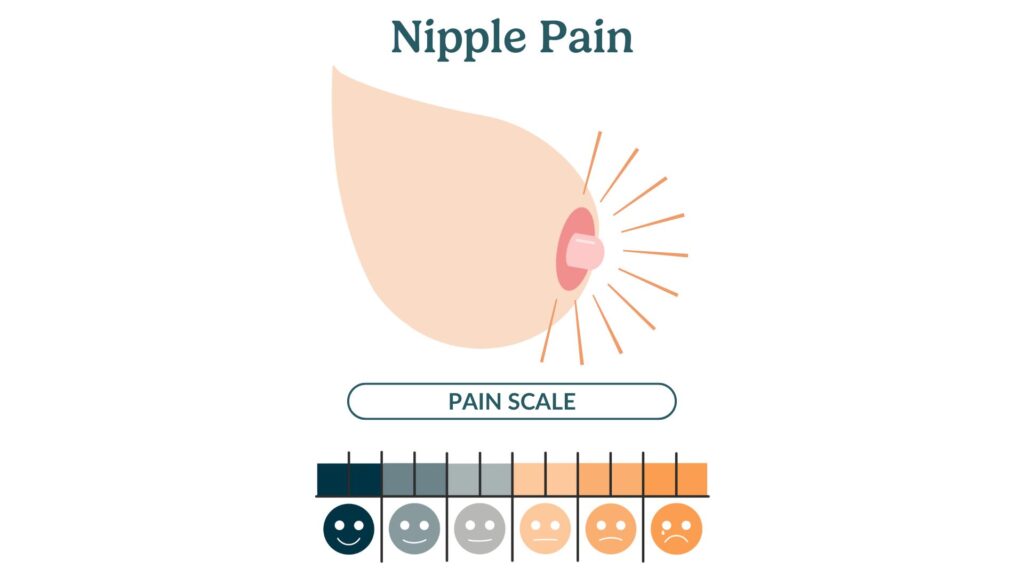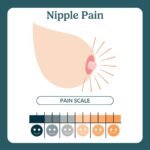nipple pain

Nipple pain
Nipple pain is a common issue for breastfeeding mamas, especially in the early days. It can be caused by various factors such as a poor latch, dry skin, or an infection. Proper positioning and latch are important to prevent and alleviate nipple pain, ensuring a more comfortable and successful breastfeeding experience.
What to watch out for
It’s important to recognize the signs and causes of nipple pain early on. Here are some common issues and tips for resolving them:
- Poor latch: If your baby isn't latched on properly, it can cause nipple pain. Ensure your baby's mouth covers both the nipple and a large part of the areola. If you experience pain, gently break the suction with your finger and try latching again. Read more about a good latch and other tips.
- Dry, cracked nipples: Dry skin can lead to cracking and pain. Use an organic nipple balm to keep your nipples moisturized. Avoid using lanolin-based creams as they do not promote healing. Learn how to heal cracked nipples.
- Thrush: This fungal infection can cause burning nipple pain and may also affect your baby's mouth. Look for white patches in your baby's mouth and consult your healthcare provider for appropriate treatment.
- Blocked ducts: A blocked milk duct can cause pain and a lump in your breast. Keep breastfeeding or pumping to help clear the blockage, and do a lymphatic massage and apply a cold after feedings and pumpings. Read more about plugged ducts.
- Mastitis: An infection in the breast tissue can cause severe pain, swelling, and flu-like symptoms. If you suspect mastitis, seek medical help promptly as antibiotics may be required. Read up on mastitis.
If nipple pain persists for more than a week, or if you notice any signs of infection, consult a lactation consultant or healthcare provider for advice and treatment.
Physical limitations or health circumstances
Certain physical conditions can increase the likelihood of experiencing nipple pain:
- Flat or inverted nipples: These can make latching more difficult, leading to pain. Using a nipple shield or seeking help from a lactation consultant can improve the latch and reduce discomfort. Learn more about nipple shields.
- Raynaud's phenomenon: This condition can cause nipple vasospasm, leading to sharp pain during and after breastfeeding. Keeping warm and avoiding exposure to cold can help manage symptoms.
- Previous breast surgery: Surgery can alter breast tissue and ducts, potentially leading to latch difficulties and pain.
Other terms
Understanding related terms can help you better manage nipple pain and breastfeeding challenges:
- Latch: The way your baby attaches to your breast. A good latch helps prevent nipple pain.
- Nipple shield: A tool that can help protect sore nipples and improve latch. Learn more about nipple shields.
- Mastitis: An infection of the breast tissue that can cause pain, swelling, and flu-like symptoms. Read up on mastitis.
- Engorgement: When breasts are overly full of milk, leading to discomfort and potential blockages. Learn more about engorgement.
- Thrush: A fungal infection that can cause burning nipple pain.


